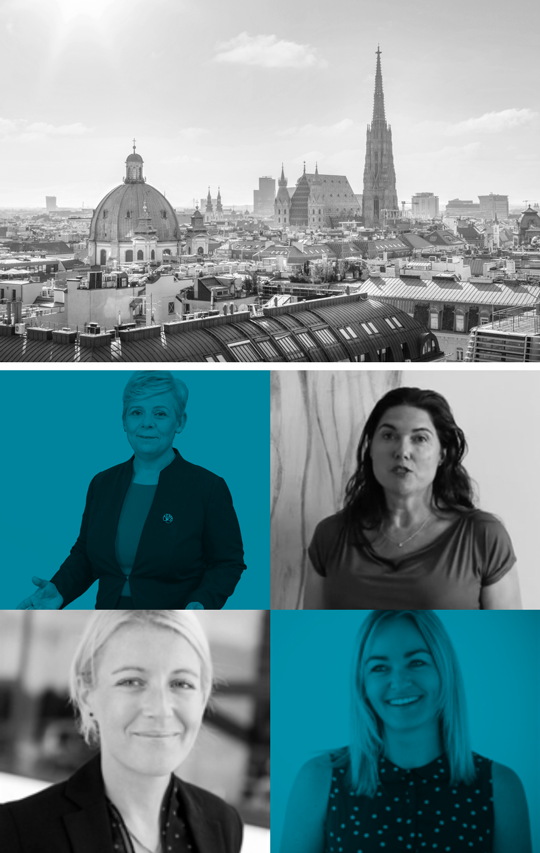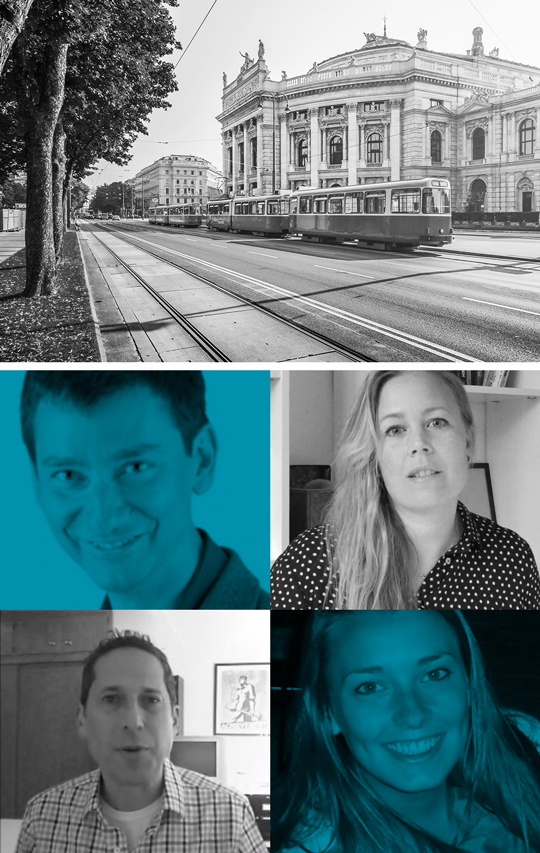Innovation, inspirations, insights: three days for qualitative research
QRCA conference held recently in Vienna was an amazing event organised by and for qualitative researchers. It stood out amongst the numerous other events with quality of the presentations, its fresh approach to many issues and, first of all, the fantastic atmosphere of sharing experiences from all over the world.
If it’s Vienna, we could not do without going back to the roots, that is, the Vienna Psychoanalytic Society. Ernest Dichter, one of the graduates of the Freudian school of psychoanalysis, is considered as the father of qualitative research (in particular, motivation research). He was born in Vienna in 1907 and received his PhD in motivation psychology at the Vienna University in 1934. He emigrated to the USA shortly afterwards. His work for the largest American companies such as Procter&Gamble or General Mills revolutionised marketing and communication. Simon Patterson of QRi Consulting was talking about the origin of qualitative research in marketing.
Why is it a good idea to remember about Dichter today? At the time of great ‘discoveries’ of behavioural economics that has finally noticed irrational motivations controlling our choices and opinions it is good to remember that the issues have been known to qualitative researchers for nearly 100 years. It is not my intention to belittle the latest achievements, in particular, the empirical research. However, the demise of homo oeconomicus (which is a concept based on the assumption of consumers’ rational decisions making and a fundamental assumption of many theorems in economics) could have occurred a bit earlier if the economists had examined the true functioning of minds and markets. By the way, Dichter was also incredibly effective in… promoting himself as a saviour coming to rescue in seemingly hopeless situations.
Two outstanding presentations concerned the very behavioural economics which has developed effective models showing how people act and think. It is, however, not enough to operate at the level of general terminology based on ‘systems 1 and system 2’ introduced by Kahnemann. Raji Bonala and Pryiam Chawla of Vox Populi (India) showed how behavioural models increase the chances of success of mobile apps. In turn, Rachel Abbott and Tom Morgan of The Behavioural Architects used the behavioural approach to communicate with clients. Presenting research results does not need to be dry slide shows for the marketing department. They take form of workshops and intranet platforms involving the entire organisation, which may leads to revolutionary changes based on consumer insights.


I still have a vivid memory of the presentation by Lesley Croskery of In Focus Research from the Republic of South Africa. The message was seemingly simple:
in order to be able to understand emotions and motivations of consumers in a country as linguistically and culturally diverse as South Africa, you need to conduct interviews in several different languages, sometimes several languages at a time, as many people use various vernacular for expressing various emotional states, fluidly passing from one language to another.
In particular, if it is required – on financial grounds and under the pressure of time – that interviews are conducted in English only, the researcher loses the authenticity of opinions, so much needed in qualitative research, even if English is a commonly used language. Lesley presented results of research conducted by her company where we could see the participants describe the differences between their self-representations expressed in English and in their basic local languages. This is not so much an issue in Poland or Russia, however it often happens that customers from the UK or the US require that interviews are conducted in English (true, this is faster and cheaper) without thinking about the influence of such decision on the final result.
Many presentations were dedicated to the important issue of communicating the research results. How to make reports engaging and interesting for the client? How to encourage clients to act (instead of shelving a report)? How to transfer the knowledge obtained from research so that customers actually understand the consequences for their companies? There were several speeches like this and the suggested solutions varied to a great extent.
Jim Mott of BAMM London put forward a radical solution – when you carry out a research in a foreign country you should go out to the city with a camera, stroll, watch and, preferably… get lost. In the presented case the team of researchers compiled a slideshow illustrating the environment in which their research participants – owners of car service facilities – live and work. This does not sound like an emotional issue – but the presentation told more about their lives than they were able to tell about themselves. How simple is this? And it’s undoubtedly effective!
The speeches concerning presentation techniques were also very interesting. Marc Engel of Engel Research Partners (USA) and Pascal Patenaude of Patenaude Research & Communications (Canada) showed how to transform formal presentations into creative workshops based on the techniques of improvisation and creative thinking. The level of energy passed to the listeners would certainly have led to a creative explosion if they had not been replaced by Patrice and Patric Wooldridge of Wooldridge Associates, US. Mr. and Mrs. Wooldridge, perfectly synchronised, talked about tai-chi techniques that help you find your inner balance, correct breathing and full control, so much needed by presenters.
Another session concerned involving clients in the process of research. A brilliant example was put forward by Edward Appleton and Claudie Antoni of Happy Thinking People (Germany). The project was implemented by McDonalds’ for the benefit of owners of McDonald’s restaurants. At first they participated in a session of ‘speed dates’ with a group of customers. Every McDonald’s representative could talk to consumers and the participants changed every several minutes. The next stage of the research involved accompanied visits at the restaurants, allowing observation from a consumer’s point of view. Finally, there were creative sessions and an ‘Oscar’ competition with awards. The entire event was completed in 2 days in several US cities at the same time! The result was not a traditional report, but a list of insights and ideas inspiring further work on implementation. They concerned both quality of service as well as the offer, communication and Customer Experience in general. Wow!
There were also presentations related to methodology of qualitative research. Two presentations tackled the issue of sensory testing. Multi-sensory collages presented by Maria Kreuzer of Institut für Marketing – Strategieberatung (Austria) and Sofia Costa Alves of MindBrand (Brazil) seemed particularly interesting. They allow for creating Chinese portraits or association maps based not only on verbal stimuli, but also on tactile and visual ones. However, it is not only various stimuli that allow for rich expression of feelings that are hard to put into words – for instance, Rebecca Bryant of Bryant Research and Tone Graaten of Moods Research (USA) showed that also… food products are excellently suitable for projection techniques – in particular in projects requiring a multi-cultural exploration. A very good case study was presented by Oana Popa Rengle of Mappers (Romania). Oana showed how modern techniques of online qualitative research helped a dairy producer understand the challenges of introducing a new category to the market.
Some presentations discussed the importance of cultural differences. My own presentation showed the history of Central and Eastern European markets, their current development level and the differences that make it extremely difficult to draw up a coherent strategy covering the entire region. You may learn more about this subject here: /link/. Sergey Sheykhetov of TNS Global (Kenya) talked about challenges that researchers conducting qualitative research in Sub-Saharan Africa are facing.
Three days spent in the company of extraordinary researchers from many countries are three days of fantastic inspiration, an opportunity to exchange experiences, but also food for thought concerning our own work. Our readers know that Inquiry’s team is always happy to test new methods and is not afraid of challenges in implementing innovations. We invite you to explore the transformation of the contemporary consumer together!
Inquiry Market Research offers research services across all Central and Eastern European markets. We are happy to share our experience with you and help you find the best research methods for your projects in CEE.
